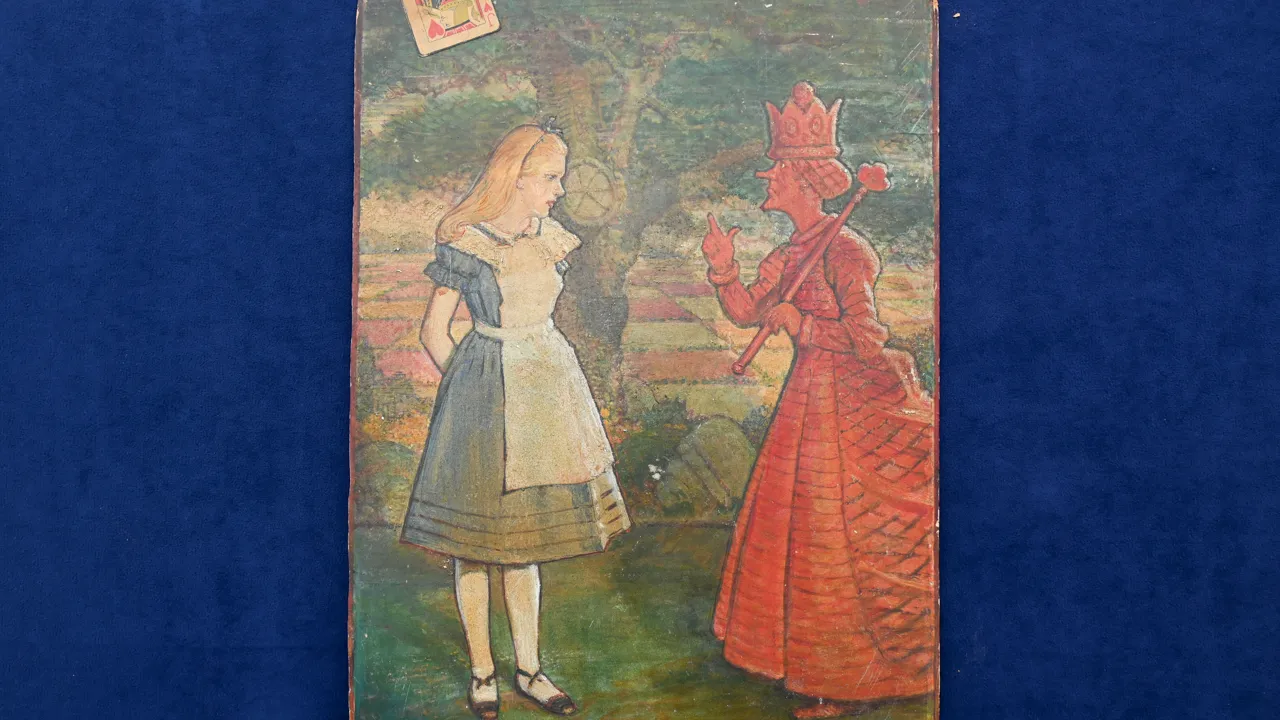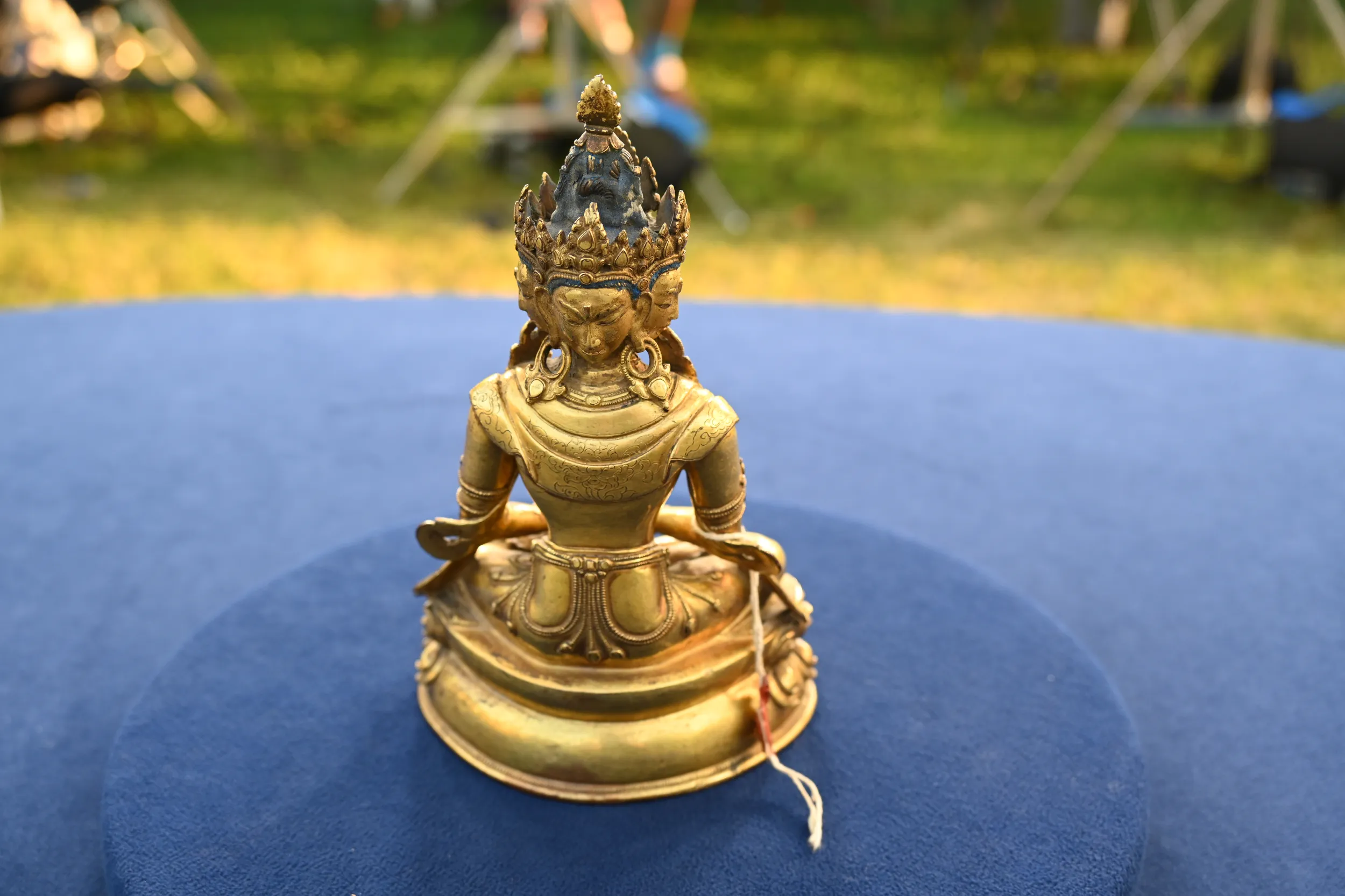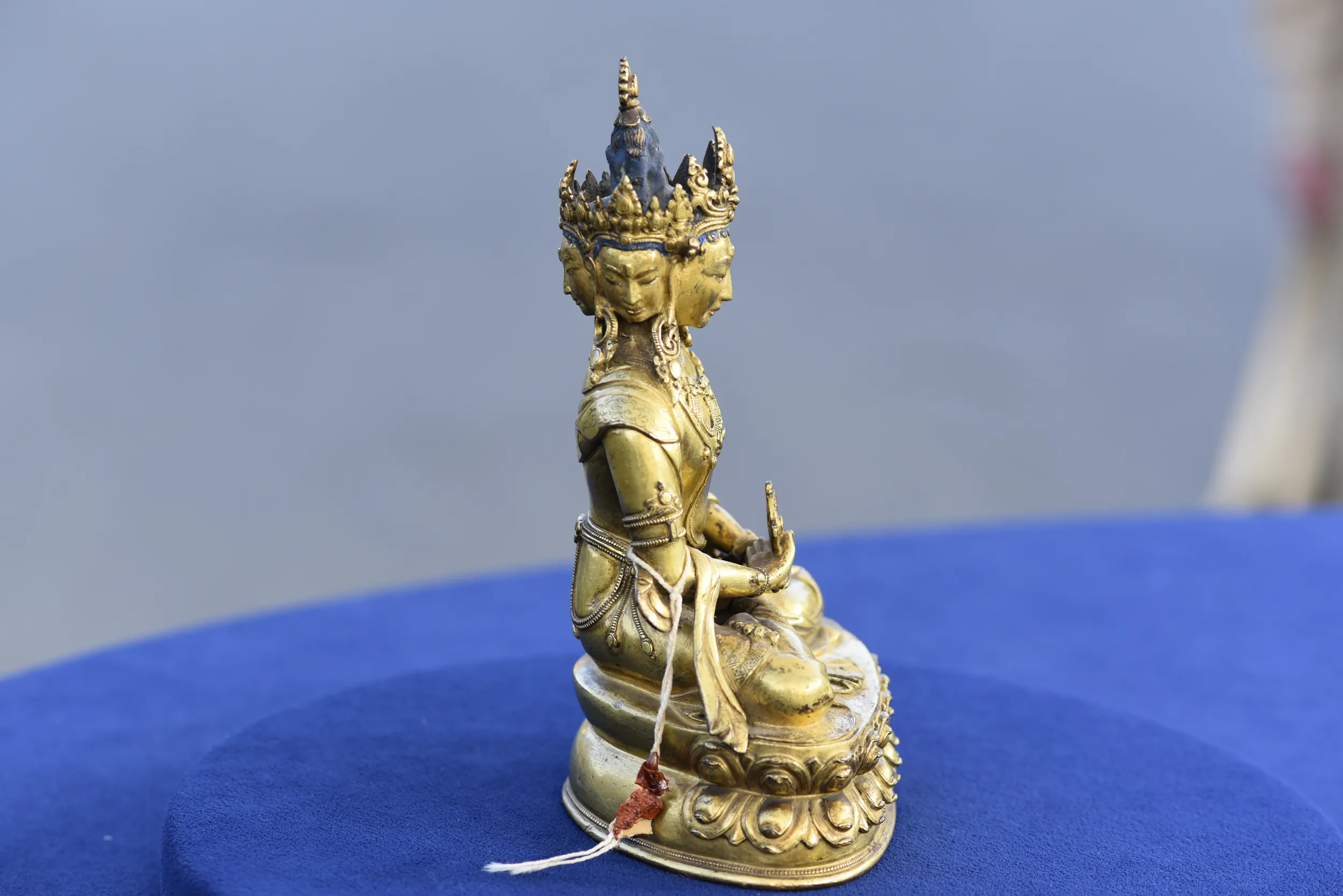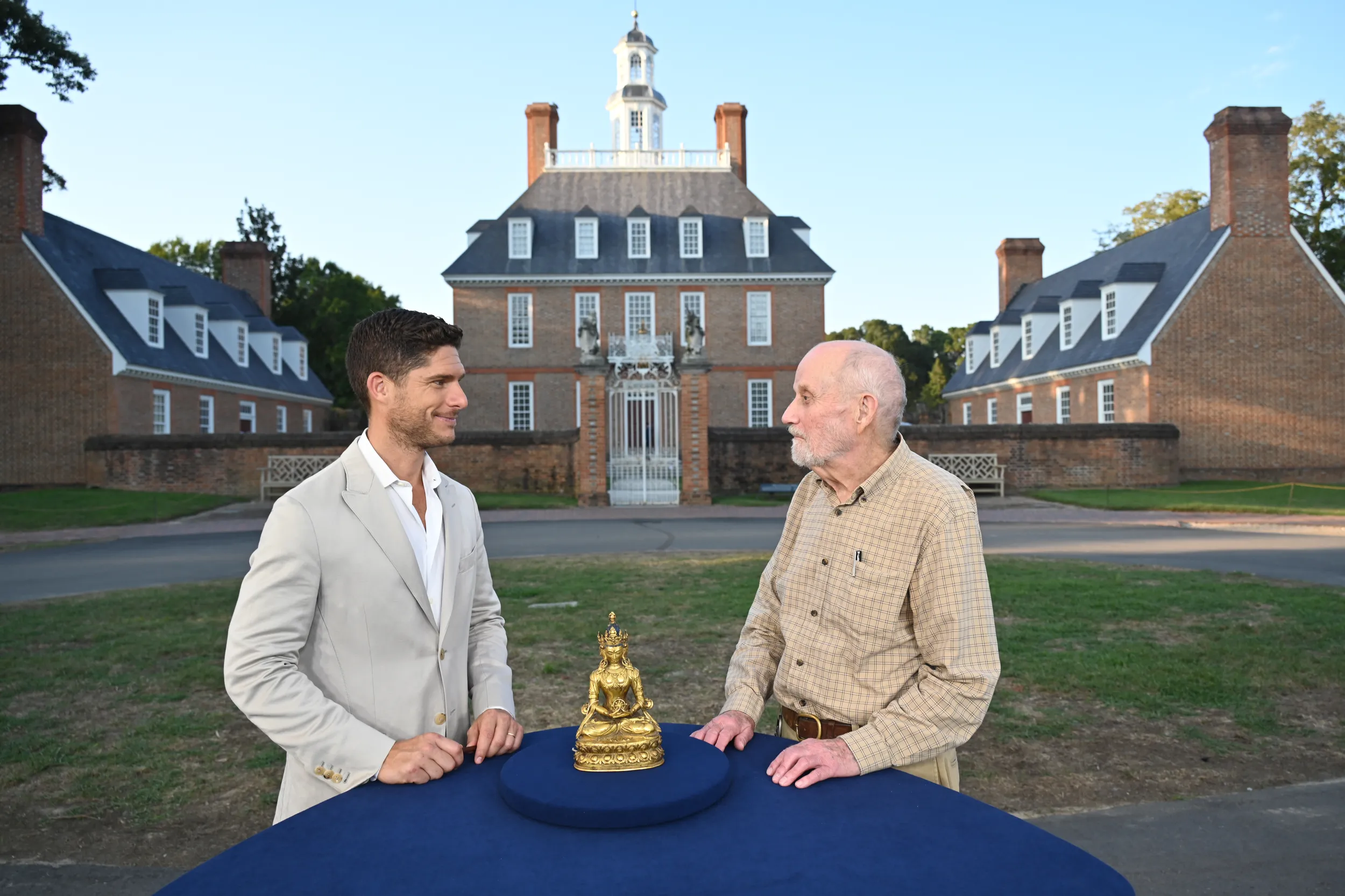GUEST: Well, it's a Tibetan Buddha. It's quite old-- 17th century, I've been told by a couple of art connoisseurs from the museum of art in Richmond. I bought it in Nepal, uh, I paid $150 for it.
APPRAISER: In, in Nepal?
GUEST: In, in, in Kathmandu, yes. I went to, uh, Columbia University studying Asian religions, so I knew quite a bit, and I've had to teach, you know, Buddhism, Hinduism, Chinese and Japanese religions. So I came to William and Mary in 1970, and this came with me. The way that they cast the metal in all this detail is amazing to me.
APPRAISER: Do you happen to know what the figure is holding to its waist?
GUEST: The wheel of life, basically.
APPRAISER: Yeah, the Dharma Wheel. It's representative of Buddha's teaching...
GUEST: Mm-hmm.
APPRAISER: ...and the moral world. It's commonplace that Buddhas that were parts of sets...
GUEST: Mm-hmm.
APPRAISER: ...and in, in China, they often had sets up to 2,000...
GUEST: Wow, didn't know that.
APPRAISER. ...of cast deities behind a central deity as a, as a backdrop, and they're often numbered, but they get broken up. It is unfortunate that, that, primarily in the 20th century, commercial enterprise or commercial necessity forced these devotional objects to be broken up and to be liquidated. And this is all hand-chased work. And then on the drapery to the shoulder, and the jewelry to the chest is beautifully chased, as well. There's something different about the face and the crown. There's a slight matte finish, so they were painted at one point.
GUEST: Yes.
APPRAISER: And it is to give a humanistic or a, an earthly tone to the face, a serene contrast to the gilt bronze. The bead to the base here is very, very tight. It's very, very good. It's not un-uniform or sloppy, or falls into itself. On inferior 20th-century bronzes, often they omit work to the back. It's time-consuming, it's expensive. So 17th-, 18th-century bronzes will show a continuation of their chase work, a continuation of jewel drapery to the waist. And again, that beadwork continues and is beautiful, you know, circumference to the base. Now, there is a tag on the right arm. Um, do you happen to know what that tag represents?
GUEST: Yes, when I bought it in Nepal, I was told that I needed that to get it out of the country.
APPRAISER: Mm-hmm.
GUEST: Because they didn't want any of their own Nepalese art and precious things taken out.
APPRAISER: You're right, these were done so objects were easily identified as ready for export.
GUEST: Mm-hmm.
APPRAISER: Or to be able to be exported. They add no real value to the bronze.
GUEST: No, you're right.
APPRAISER: I think in today's market, it would have a, a retail replacement value... To go and buy it now at a, at a good, reputable dealer of Buddhist works of art, it would be valued at $100,000.
GUEST: Mm, yes.
APPRAISER: In an auction setting, it's likely to have an estimate of between $30,000 and $50,000.
GUEST: That's all? Hm!
APPRAISER: Some would think that's a good return on investment-- even with inflation.
GUEST: Ah, huh. Well, thank you very much.














